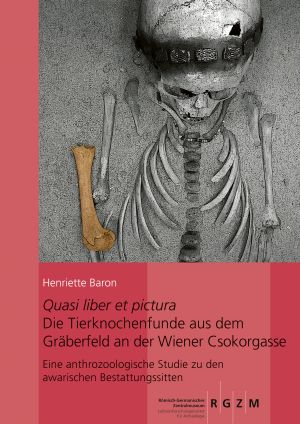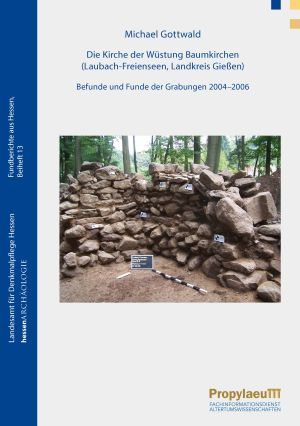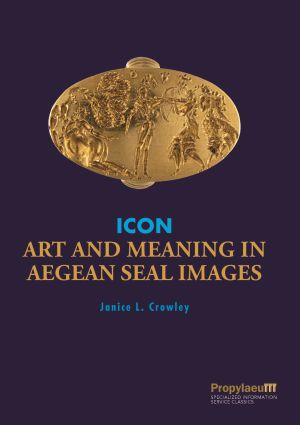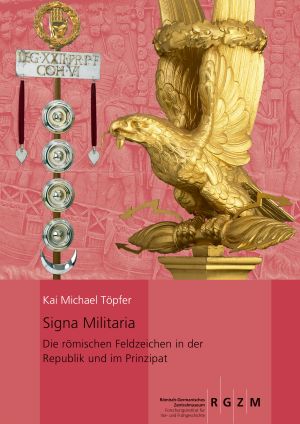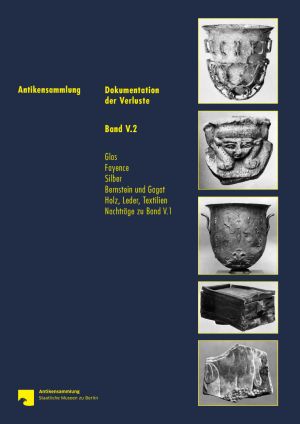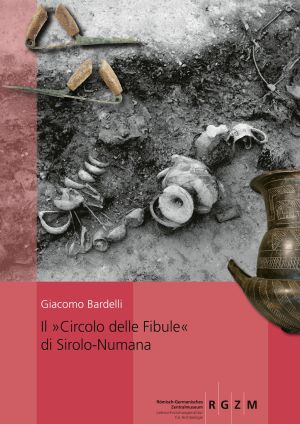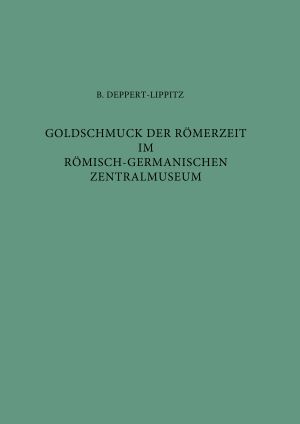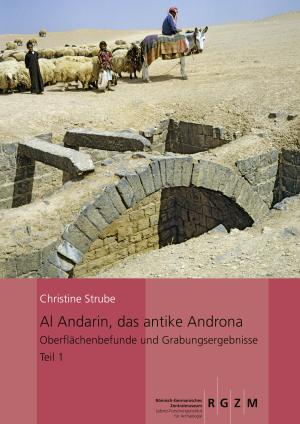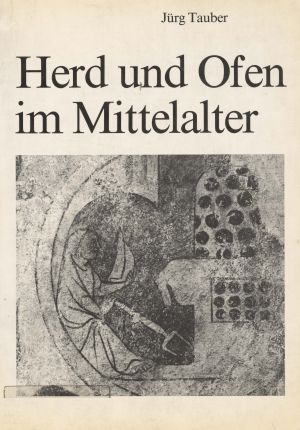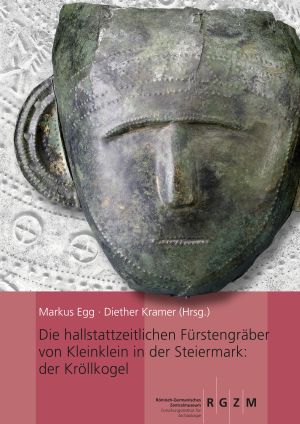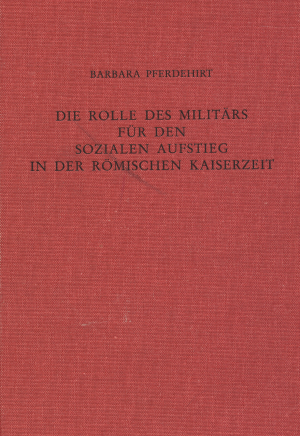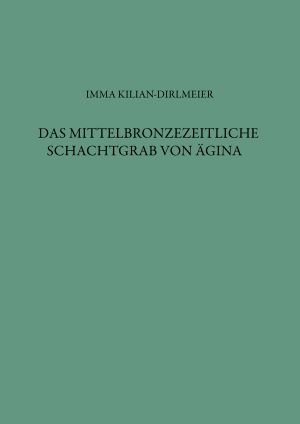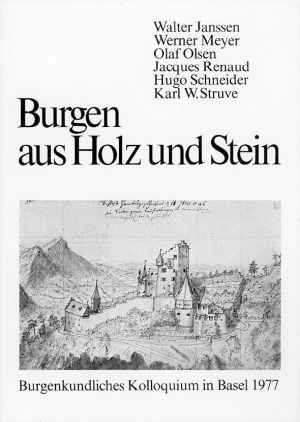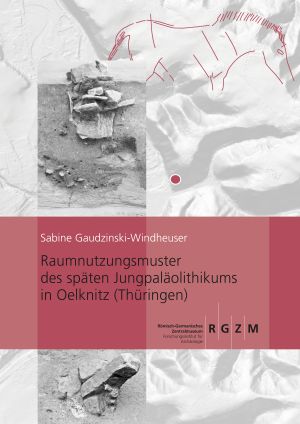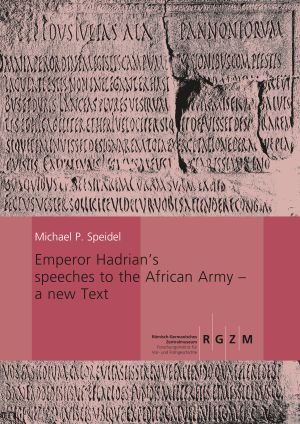Books
Byzantinische Gürtelschnallen und Gürtelbeschläge im Römisch-Germanischen Zentralmuseum: Die Schnallen ohne Beschläg, mit Laschenbeschläg und mit festem Beschläg des 5. bis 7. Jahrhunderts
The Römisch-Germanisches Zentralmuseum in Mainz currently owns 363 Byzantine belt buckles and fittings dating from the 7th to the early 11th century. Most of them come from the centre of the Byzantine Empire, where there are few cemeteries with grave goods and therefore few finds. These buckles therefore fill a major gap in our knowledge of this type of clothing accessory, even though they are all single pieces without any context.
Part 2 of the catalogue also shows the characteristics, dates and distribution areas of the various buckle types, and a chronological table makes it easier for the reader to date new finds. The analysis considers issues such as the history of craftsmanship, trade and costume, as well as the search for former owners. These were mainly men who used buckles not only to fasten their waist belts but also as a sign of rank, recognisable by the metal and decoration. For the first time, there is also evidence that women began to wear belt buckles in a gender-specific manner in the 9th century at the latest.
In a separate article, the conservator M. Fecht describes the results of her research into the manufacturing technique and the - mostly lost - colouring of Byzantine belt buckles from the 8th century.
As a supplement to Part 1, a catalogue of 33 subsequently acquired finds has also been included in this volume.
Ad Volume 1
Quasi Liber et Pictura: Die Tierknochenfunde aus dem Gräberfeld an der Wiener Csokorgasse – eine anthrozoologische Studie zu den awarischen Bestattungssitten
Animal bones in Avar cemeteries are often interpreted as food offerings for the dead or, more generally, as "sacrifices". But why did the Avars choose certain animals and animal parts to place in the graves of their dead?
Henriette Baron presents the animal bone finds from the Avar cemetery at Csokorgasse in Vienna, analyses burial practices and provides a detailed overview of Avar animal remains from the 7th and 8th centuries - with the aim of gaining new insights into what people actually saw in the animals. It becomes clear that the interpretation as food offerings sometimes falls short; the selected animals and animal parts had deeper meanings. There is also evidence of a change in the practice of offering animals over several generations, which may be linked to fundamental social changes.
On closer inspection, animals are "like a book and a painting" - "quasi liber et pictura" - a mirror of our being, as Alain de Lille wrote in the 12th century.
Die eisenzeitlichen Grabhügel von Vergina: Die Ausgrabungen von Photis Petsas 1960-1961
The village of Vergina stands on the ancient necropolis of Aigai, the first capital of the Macedonian Empire. With over 300 burial mounds still visible in the terrain, it dates from the early Iron Age (around 1000 BC) to the Hellenistic period (2nd century BC).
This volume presents for the first time the features and finds of the rescue excavations under the direction of Ph. Petsas in the course of road construction in 1960-1961. Together with the results of the systematic excavations by M. Andronikos, representative material is available to investigate the chronology, chorology and organisation of the necropolis and to enable statements to be made about Macedonian society in the early Iron Age.
Die Kirche der Wüstung Baumkirchen (Laubach-Freienseen, Landkreis Gießen): Befunde und Funde der Grabungen 2004–2006
In the course of a research project on processes concerning the emergence and abandonment of medieval settlements in the Vorderer Vogelsberg, excavations were carried out from 2004 to 2006 on the church remains of the village of Baumkirchen near Laubach-Freienseen (district of Gießen) in Hesse, which has been deserted in the Late Middle Ages. This study deals with finds and features from the single-nave stone church and the surrounding area. According to the associated finds, the walls of the churchyard encompassed also secular buildings. Village and church were probably abandoned in the same period.
ICON: Art and Meaning in Aegean Seal Images
The ICON book is a revelation of the lives of the Aegean peoples drawn from the hands of their own artists. ICON presents the images that are carved or chased on Aegean seals and signets and interprets their meaning in the absence of accompanying deciphered texts. Throughout their long floruit, the seals give the most extensive illustrations of life as it was lived and imagined in Minoan Crete and Mycenaean Greece in the Bronze Age.
ICON, with its 1800 illustrations, is the first comprehensive iconographic analysis of the Aegean seal images. ICON describes and interprets the images through a dedicated vocabulary which recognizes their artistic innovations and celebrates the detail of their sophisticated, nuanced and polyvalent iconography.
Eine Siedlungskammer der Ältesten Linearbandkeramik im Nördlinger Ries – Die Sammlung Krippner
The Nördlinger Ries was already densely populated at the beginning of the Neolithic period (c. 5400 cal BC), with 16 documented archaeological sites. In addition, the Enkingen site is one of the oldest Linear Pottery sites outside its area of origin in Transdanubia. In this book, the sites discovered by Franz Krippner, a passionate amateur archaeologist, are presented in detail, their finds scientifically analysed, the social and economic networks examined and a settlement model drawn up. The transition to the subsequent Flomborn stage is then analysed before the book concludes with an outlook on the settlement of Central Europe at the beginning of the Neolithic period.
Additional data: https://doi.org/10.11588/data/FD7DTS
Signa Militaria: Die römischen Feldzeichen in der Republik und im Prinzipat
The Roman army had a complex system of signalling that used acoustic and visual aids - wind instruments and field signs - to communicate orders quickly. The standards used for this purpose, the signa militaria, were not only objects of daily use, but also important symbols of Roman military power and important symbols of identification for the soldiers united under them. The loss of such an emblem was considered a great shame not only by the soldiers but by all Romans.
In this volume, the standards of the Roman army are intensively analysed on the basis of an extensive and richly illustrated collection of material, including numerous ancient depictions, inscriptions and fragments of original field insignia. The focus is on their appearance, use and religious status. In addition, the depictions of standards in Roman art will be examined for their attention to detail and their semantic meaning. The result is a multi-layered picture of Roman field insignia, which were more than simple aids to orientation on the battlefield, and not only in the eyes of the soldiers.
Antikensammlung. Dokumentation der Verluste, Band V. 2: Glas, Fayence, Silber, Bernstein und Gagat, Holz, Leder, Textilien mit Nachträgen zu Elfenbein und Knochen, Nachträge zu Goldschmuck, Nachträge zu Gemmen und Kameen
The Antikensammlung of the Staatlichen Museen zu Berlin suffered great losses as a result of the Second World War. This volume lists the losses of objects made of glass, faience, silver, amber and gagat as well as organic materials. It also contains supplements to the gold objects, gems and bone work already listed in Volume V.1. All available basic information and images of the objects are published to enable identification where necessary. In particular, the highly famous glass collection, of which more than 50% is missing today, is thus made visible again.
Il »Circolo delle Fibule« di Sirolo-Numana
Among the most important finds in the pre-Roman Marche, the »Circolo delle Fibule« of Sirolo-Numana (prov. Ancona) stands out for the huge number of fibulae found within its nine tombs – over 1,200 specimens of different types and materials. Discovered in 1970 and never before published, this key context of Picene archaeology is now the subject of a specific study that illustrates the variety of the grave assemblages and the complexity of the local funerary customs. An examination of the grave goods gives an insight into the processes of social structuring taking place in Numana between the end of the 7th century B.C. and the beginning of the 5th century B.C., between a strong conservatism and the first international contacts.
Goldschmuck der Römerzeit im Römisch Germanischen Zentralmuseum
This catalogue presents the RGZM's collection of Roman gold jewellery. A general introduction describes the development of Roman jewellery from the 1st to the early 3rd century A.D. Production techniques and the social position of goldsmiths are discussed. Finally, the catalogue presents the objects in the collection, divided into the following groups: neck jewellery, arm jewellery, jewellery of uncertain provenance and fragments, earrings and ear pendants, finger rings and modern jewellery with ancient gems.
Die Grafen von Kyburg: Kyburger-Tagung 1980 in Winterthur
To mark the 800th anniversary of the first mention in historical records of Winterthur in 1180, the Historical Society of Winterthur held a conference on the founders of Winterthur, the Counts of Kyburg, accompanied by a small exhibition. The aim was to link the history of the locality with that of the region and beyond and, in doing so, to pay tribute to the dynasty, bearing in mind the current state of historical research and putting it in an overall context. As a consequence, the idea behind the publication was far-reaching.
The first part deals with the history of the family and its reign, studies the Dillingen roots in Swabia and Switzerland (Heinz Bühler and Adolf Layer) and critically assesses the way in which the family used their power (Roger Sablonier). The second presents the counts’ church endowments (Alfred Häberle), castles (Werner Meyer) and city foundations (Karl Keller). The third and final part is dedicated to the 1180 “town charter” of Winterthur (Ferdinand Elsener), the coins (Dietrich Schwarz) and the heraldry (Hans Kläui). The volume ends with a report on the excavations carried out at Mörsburg Castle (Jakob Obrecht), one of the counts’ residences near Winterthur.
Al Andarin, das antike Androna: Oberflächenbefunde und Grabungsergebnisse: die Umfassungsmauer und das Kastron, Teil 1
Al Andarin, ancient Androna, with its two enclosing walls, ten churches, a public bath and a large military building (castron) covers an area of 155 ha and is thus one of the largest ruined sites in the water-scarce steppe areas of central Syria. As the first of about 300 settlements in these areas, Androna was investigated by excavations and surveys in 1997-2007.
The present results on the surface features, the castron (559 AD) and the wall rings not only make the history of Androna in the 5th-7th centuries AD tangible, they also paint an extremely vivid picture of the relationship between countryside and city in the Late Antique-Early Byzantine period.
s. Volume 2
Herd und Ofen im Mittelalter: Untersuchungen zur Kulturgeschichte am archaologischen Material vomehmlich der Nordwestschweiz (9.-14. Jahrhundert)
It is very often the smaller and less spectacular evidence of human activity that gives us the best insight into the everyday lives of people from long-forgotten eras – insight that cannot be gained by studying written sources or works of art. This book uses pottery, the most important and abundant finds category, as the main source in an attempt to retrace the history of the hearth and stove. To do this, the author has recorded and analysed the mostly unpublished finds from almost one hundred excavations carried out at castles and other medieval sites. Based on these finds and features, he has been able to reconstruct the development of the hearth and stove.
Tiere im Byzantinischen Reich
The Byzantine Empire (395-1453 AD) has long been the subject of research in the humanities. In particular, the large number of available written sources has provided the basis for reconstructing the political, economic and socio-cultural developments of the period. However, the written sources are largely silent on everyday matters: they did not seem worth mentioning. This includes food. Comprehensive work in the natural sciences is ideally suited to fill this gap and to corroborate the findings of the written sources.
As a first step in this direction, this volume summarises the status quo of archaeozoology for the Byzantine Empire. It shows what is already known about Byzantine animal husbandry, hunting, fowling and fishing, and what cultural, historical or eco-geographical factors influenced these economic sectors in the provinces. Regional and temporal differences are considered as well as commonalities, including the importance of Roman tradition and the role of Christianity in nutrition.
Römischer Basaltlava-Abbau zwischen Eifel und Rhein
Between the towns of Andernach on the Rhine and Mayen in the Eifel, there was already one of the large mining areas for mineral raw materials in ancient times. Products made of basalt lava - above all high-quality millstones - became real export hits in Roman times. Traded on a large scale across the Rhine, they found buyers in Britain as well as in the foothills of the Alps.
The study focuses on the millstone quarries at the Bellerberg volcano near Mayen. New excavations and prospections within the framework of the Volcano Park East Eifel Project allow a detailed reconstruction of the production processes and show a high degree of division of labour. Model calculations including all finds and features also from pre- and post-Roman epochs allow quantification of the economic processes. A synthesis of all comparable mining areas in the Old World rounds off the study.
Das Siedlungsmuster des Mittelpaläolithikums in Süddeutschland: Eine GIS-gestützte Archäoprognose für Fundstellen in Bayern und Baden-Württemberg
This study investigates the settlement behaviour and land use of Neanderthals based on the location parameters of Middle Palaeolithic cave and open-air sites in southern Germany. Methodologically, the author works with the "Weighted Layer Approach" (WLA) - a variant of multiple linear regression. The model includes the height above sea level, the slope inclination, the orientation and the distance to the nearest watercourse. These parameters are correlated with geological factors such as the distribution of Pleistocene soils, the presence of a limestone mountain range with caves, and the extent of the Pleistocene ice advances. Wiesner uses the transparently weighted data to calculate an archaeoprediction model, which results in detailed prediction maps for the probability of the presence of previously undiscovered Middle Palaeolithic sites in the area under investigation. The work was awarded the German Study Prize for Archaeology by the DGUF in 2021.
Die hallstattzeitlichen Fürstengräber von Kleinklein in der Steiermark: der Kröllkogel
The sites around the Burgstallkogel between Großklein and Gleinstätten in western Styria are among the most outstanding of the Early Iron Age in Austria and Central Europe. The centre is the hilltop settlement on the Burgstallkogel, at the foot of which lies the Sulmtal necropolis, with some 700 burial mounds still standing.
On the first river terrace of the Saggau valley, near Kleinklein, the four richest princely burials of the entire eastern Hallstatt district were found. Most of the finds were made in the 19th and early 20th centuries. A successful re-excavation in 1995 in the most recent princely tomb, the so-called Kröllkogel, provided the impetus for the present new treatment and re-evaluation of this magnificent tomb. To achieve this goal, the Joanneum Universal Museum in Graz and the RGZM joined forces and organised an interdisciplinary group of researchers to examine all aspects of the find.
Die Rolle des Militärs für den sozialen Aufstieg in der römischen Kaiserzeit
In order to be able to take on important offices in politics, administration and the military in the Roman Empire, Roman citizenship was indispensable. Peregrine men who enlisted in military service received Roman citizenship for themselves and their children and the right to legally marry a non-Roman woman after their term of service and honourable discharge. This book examines, on the basis of so-called military diplomas, how these privileges changed over time for the various types of troops and what the consequences were for the soldiers' descendants.
Die Burg Zug: Archäologie – Baugeschichte – Restaurierung
During its 800-year existence, Zug Castle went through many changes. Construction of a large section of the architectural complex still in existence today began in the 12th century. Built originally as a manorial seat, it evolved into a residence in the Late Middle Ages and eventually became an historical museum in the 20th century.
Between 1967 and 1982, archaeological excavations took place in the castle grounds and an extensive architectural survey of the building itself was also carried out. Post-excavation work painted a surprisingly detailed picture of this extraordinary building, the importance of which radiated beyond the boundaries of Canton Zug. The main themes of the publication include the results from the excavations and architectural surveys as well as the archaeological finds recovered. Other topics are the restoration of the building and the exhibition concept of the “Museum at the Castle”.
Dauerthal, Wallmow, Klockow, Dreesch, Rosow und Bietikow – verursacherfinanzierte Grabungen mit bandkeramischen Funden und Befunden aus der Uckermark, Brandenburg
By removal more than 1.5 million m2 topsoil in the Uckermark, six sites with Bandceramic features were documented. Two pit-houses provided covered a work-area, functionally used for slaughtering, milk processing and food preparation in cooking ovens. The site Dauerthal yielded 100% domesticated animals, which were slaughtered on the site, with skin processing into leather. The absence of certain body parts (skulls without lower jaws / bones associated with best cuts of meat) is interpreted, even religious motivated actions being discussed. Unexpected is the lack of longhouses, which in other regions are the most characteristic feature of this culture. Ceramic-decorations show parallels to neighboring regions, and an exchange of lithic objects (trapezes, truncated blades) with the indigenes population.
Solutré: An archeozoological analysis of the Magdalenian horizon
In this monography, the results of an analysis of the fauna from the Magdalenian horizon at Solutré, Burgundy, France are presented. They show that the Magdalenians hunted mainly horses at Solutré, but also that they took relatively high numbers of reindeer and bison. Times of death of horses, reindeer and bison suggest that the site was probably used at varying times of the year and that groups of juvenile reindeer and bison were taken on a seasonal basis. One of the characteristics of the Magdalenian faunal assemblage is the extremely low number of butchery traces and high number of carnivore gnawing marks on the remains of horse, reindeer and bison.
Das mittelbronzezeitliche Schachtgrab von Ägina
The island of Aegina in the center of the Saronic Golf payed for a long time a significant role in the exchange network of the Aegean. The shaft grave came to light in 1982 during sytematic excavations in the fortified settlement on Cape Kolonna. The rich furniture, the tomb’s architecture and the topographcal location give evidence for the importance of the settlement in Middle Bronze II. Comparable elite burials are known from the Greek mainland and the islands. The analysis of the mortuary practices open new views on social structures, economic exchange and the establishment of a ruling class.
Burgen aus Holz und Stein: Burgenkundliches Kolloquium in Basel 1977
This volume contains the proceedings from a conference on castle studies held in Basel in 1977 to celebrate the 50th anniversary of the founding of the Schweizerischer Burgenverein. Looking back over half a century of the association’s existence, which has a good reputation in academic circles both here and abroad, the conference programme was intentionally wide-ranging. The contributions from various researchers in Switzerland and abroad point to the diversity of medieval defensive structures in terms of form, function and materials. The six presentations share an important leitmotif in current medieval research: interlinking archaeological features with historical contexts. The volume contains two Swiss papers; Hugo Schneider’s paper on Letzi walls (defensive barriers or boundary markers) in the Alpine region puts the spotlight on the founding period of the Old Swiss Confederacy, while Werner Mayer attempts to make an archaeological contribution to the medieval history of settlement by examining the links between castle construction, the rise of political power and forest clearance rights. Using lowland castles in the Rhineland as an example, Walter Janssen sheds light on the transition between timber construction and stone architecture in the High Middle Ages and examines the social status of individual noble lineages based on the differences in the construction of their castles. Similarly, Jacques Renaud uses 13th/14th century brick-built castles in the Netherlands to present the history of Dutch feudalism. Based on the geographic locations and types of construction of timber-built Slavic castles in north-western Germany, Karl Struve examines the social structure of the Slavic tribes. Olaf Olsen’s paper on concentric castles in Denmark provides an insight into the military and political organisation of Danish kingship at the time of the Vikings.
Raumnutzungsmuster des späten Jungpaläolithikums in Oelknitz (Thüringen)
In discussions on the evolution of human behaviour, the question of how humans moved in space plays a crucial role. The earliest evidence of behavioural patterns that can be interpreted in this sense comes from the transition from the Middle to the Upper Palaeolithic.
The Thuringian site of Oelknitz represents one of the most important testimonies to early social systems, which become visible as early as about 15000 years ago. The analysis of this site is able to show the variability of settlement systems in the late Upper Palaeolithic and to contribute to a much more complex understanding of settlement systems, despite the worldwide scarcity of such excellently preserved findings.
Emperor Hadrian’s speeches to the African Army – a new text
In summer 128 emperor Hadrian (117-139) went to Numidia to review the fighting skills of Rome’s African army. In speeches to the troops, he evaluated the maneuvers he witnessed. Afterwards the army recorded the speeches in an inscription on the parade ground at Lambaesis. Though shortened and broken by gaps, these are the only surviving speeches of an ancient emperor to his soldiers and thus offer unparalleled insight for understanding the training and fighting skills of the Roman army.
To recover as much of Hadrian’s speeches as possible is the purpose of this book, restoring the structure of the inscription and recreating a coherent text in order to hear Hadrian’s words ring again, down through the millennia.




